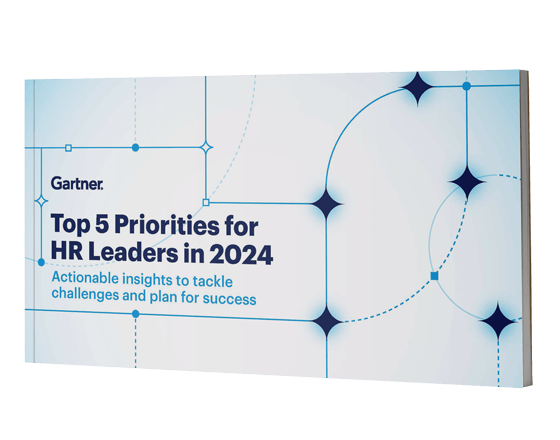How to overcome diversity challenges in the workplace
With many parts of the world embracing multicultural societies, it has become common for people of all backgrounds to live, learn, play and work alongside each other.
Multicultural societies bring a wealth of benefits to all, expanding our perceptions and exposing us to new ideas, customs, ideologies and more.
In a similar way, changes in attitudes regarding age, disability, gender, background and sexual identity have changed the makeup of society.
As many parts of the world adapt to a ‘new normal’ of diversity within society, it is crucial that our places of work adapt accordingly to embrace and benefit from the broad wealth of talent a diverse society can foster.
The importance of diversity and inclusion in modern workplaces
Before we get too far it’s important to understand the distinction between diversity and inclusivity. Diversity relates to the ‘backgrounds’ of employees within an office. Inclusion refers to proactive approaches that help to maintain diversity.
Inclusivity is a core part of our ideology in the western world. Acceptance of different cultures, different identities and different perspectives is fundamental to our freedoms. The Universal Declaration on Cultural Diversity is a declaration adopted unanimously by the United Nations Educational, Scientific and Cultural Organization (UNESCO).
Article 3 within the declaration identifies cultural diversity as one of the roots of development, in terms of both the economy and the individual.
The UK Equality Act 2010 is also a key factor in promoting diversity. The Act has two main purposes – to harmonise discrimination law and to strengthen the law to support progress on equality.
It is imperative therefore that this ideology is applied to modern workplaces where individual identities and diversity should be celebrated, and organisations able to prosper through an increased talent pool drawing on people from all backgrounds.
Whilst there are a range of benefits of bringing together the collective experience and knowledge of a truly diverse workforce, there are also barriers to inclusion in the workplace that any employer needs to consider.
Unconscious bias
Unconscious bias refers to the assumptions we make (in this case, about people), outside of our own conscious awareness.
It’s human nature to make snap judgements about others, which is where unconscious bias creeps in on a day-to-day basis. Whether we like it or not, we will often make assumptions about people based on their race, gender, disability, background, sexual orientation, etc.
Unconscious bias can affect our attitudes and behaviours in the workplace and throughout every stage of the professional journey, from recruitment and interviews through to appraisals and promotions.
For example, an unconscious bias during the selection process could manifest itself in asking more questions to a female about their family set-up, or asking a person of a different ethnicity where they are from.
Another example is a female worker being overlooked when it comes to promotion. The decision-maker may subconsciously perceive the individual to have ‘family commitments’, which would prevent them from doing their job – whether it is factually accurate or not.
Being aware of unconscious bias is the first step to overcoming it if you want to ensure you create a truly fair and inclusive culture.
Improving diversity
According to StandOutCV, UK CEOs are white (96%), male (93%) and over 50 years old (80%). There appears to be a long way to go until a wider demographic is truly represented at this senior level.
In order to promote a culture of equality and fairness, there are steps organisations can take to foster an atmosphere of diversity and inclusivity.
Benchmarking at your starting point is key to allow you to measure the success of any initiatives, and their impact on your workforce. Much about inclusivity is subjective and so staff need to be included from the outset to understand their perceptions of the organisation.
Through an anonymous staff survey you can find out whether your organisation is as inclusive as you hope it would be, regardless of how diverse your workforce is.
The next step (which could be partially informed by the results of your survey) is to review recruiting and compensation packages. An objective third party auditor could be used to ensure that no particular groups are favoured / disfavoured when it comes to employment and pay.
Enshrine inclusivity in your company ethos
Business leaders have the power to shape the ethos of a company, and inclusivity practices can become a formal part of that ethos.
By implementing policies surrounding diversity and inclusion, your organisation can formalise the process to ensure standards are set and maintained in perpetuity.
Another element of this involves the language used within such formal documentation. It is vital to ensure that language is up-to-date and reflective of a modern, diverse and inclusive society. Experts can help you to look at the language to ensure there are no faux pas which could be avoided.
It is also a good idea to reinforce inclusivity throughout the interview and onboarding process. This will help any new recruits to fully understand and respect your policies before they integrate within the organisation.
With benchmarking in place and reviews undertaken regarding current documentation and working practices, it is important to ensure your employees can raise concerns without fear of reprisals. Equally it is good practice to revisit your staff survey on a regular basis to ensure all of your workforce are part of the conversation and understand the importance of inclusion.
Lead from the top
The figurehead of any organisation can influence a workforce at all levels, which is why when it comes to diversity and inclusion, they need to lead from the top.
To encourage an open and fair workplace where diversity is commonplace and inclusivity is enshrined in the fabric of the organisation, it is vital that leaders communicate and reinforce the benefits of a diverse workforce.
From casual one-on-one conversations through to full meetings, staff appraisals and leadership mentoring, an undiluted message of inclusivity should resonate throughout your organisation. The ultimate aim is for it to become second nature – but as we all know, shifting attitudes and perception takes time and persistence.
Be ready to learn
Nobody is an expert on diversity and inclusivity. We all have our unconscious bias, and although we can mitigate this to an extent it’s vital to recognise that you will never be able to fully empathise with people of all different backgrounds.
Training is key to helping you understand the diversity and inclusivity landscape, to keep up to date with changing attitudes and practices and to ensure you’re on the right track.
Programmes are available to help you:
- Promote awareness and appreciation of the benefits derived from having an inclusive workforce and meeting the diverse needs of service users and clients
- Foster increased engagement among staff and volunteer teams
- Deepen understanding and implementation of effective diversity and inclusion practices within the workplace
- Ensure that staff and managers fulfil their legal obligations
- Enhance organisational outcomes and performance
Utilising the GC Index for diversity and inclusion
Incorporating The GC Index into diversity and inclusion initiatives offers several benefits:
- Recognise diverse talents: The GC Index values diverse talents beyond demographic categories, allowing organisations to identify and celebrate a broader spectrum of talent.
- Mitigate unconscious bias: By focusing on individuals’ inherent abilities and potential contributions, The GC Index helps mitigate unconscious bias, promoting a more inclusive environment based on merit and capability.
- Foster inclusive teams: Insights from The GC Index enable organisations to create more inclusive teams by understanding each member’s unique strengths and role preferences, fostering collaboration and diversity of perspectives.
- Promote equal opportunity: Embracing The GC Index promotes equal opportunity by providing all individuals with a platform to showcase their abilities, breaking down barriers to advancement based on traditional biases.
- Drive innovation: Diverse teams drive innovation by leveraging varied perspectives. By using The GC Index to build diverse teams, organisations can harness creative potential and gain a competitive edge.
Incorporating The GC Index into diversity and inclusion strategies empowers organisations to cultivate inclusive, innovative, and successful workplaces.


